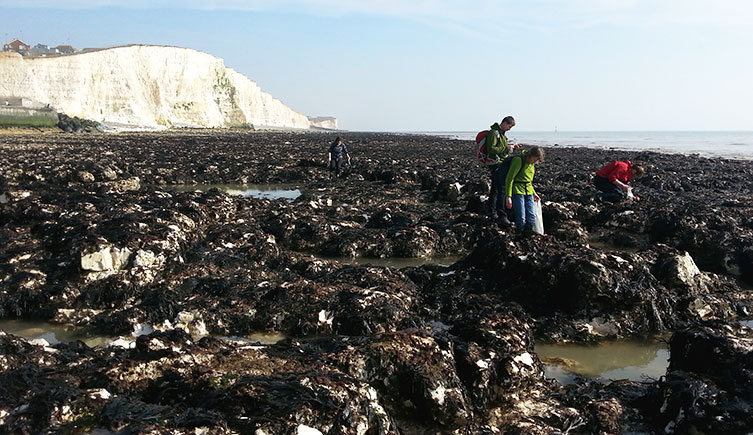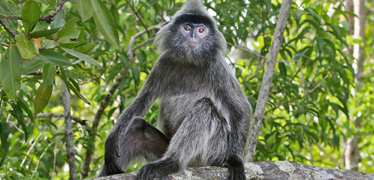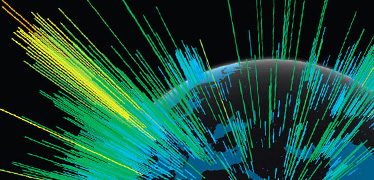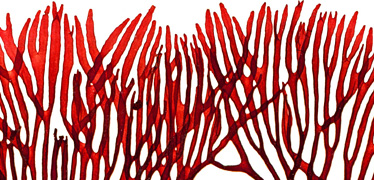UK seaweed biodiversity and conservation

Collecting algae at Saltdene, Sussex
Project summary
- Focus: Using historical herbarium specimens and new collections to inform algal conservation
The Museum's algal herbarium is particularly rich in marine algal collections from the UK. With over 60,000 specimens dating back to the 17th century, this phenomenal resource has enormous potential for informing algal conservation efforts.
These herbarium specimens and their associated data are the physical evidence that a species was present at a particular time and place. These spatial and temporal data have already been used in the development of the Important Plant Areas (IPAs) for algae in the UK.
Red List for UK seaweeds
We are preparing data for the International Union for Conservation of Nature (IUCN) Red List of Threatened Species.
This project aims to produce a provisional Red Data List for UK seaweeds by applying IUCN criteria to the data currently available and identifying key areas where further work is needed.
We are grateful to the John Spedan Lewis Foundation for supporting the first phase of this project.
Download a provisional data list: Draft Red Data list of UK seaweeds by Juliet Brodie, Jane Pottas and Jo Wilbraham. July 2014 PDF (389.5 KB)
Seaweed Collections Online
We are creating an online database of UK seaweed specimens.
Seaweed Collections Online aims to gather, analyse and share data on the seaweed species of the British Isles by using collections data from national and regional museums around the UK.
Non-native seaweeds in the UK
Non-native seaweeds have been invading UK coastlines for decades.
We are using herbarium specimens held in the Museum collections to investigate the arrival and spread of non-native seaweeds in the UK.
We estimate that approximately six per cent of the UK seaweed flora consists of non-native species. The rate at which new non-native seaweeds are incorporated into local floras is increasing globally.
Somerset seaweeds
The UK Somerset coastline extends along the Severn Estuary and Bristol Channel. The region has the second highest tidal range in the world and high silt-loading. Despite the high level of conservation sites in the area, very few detailed seaweed studies exist.
The recent resurgence of interest in a tidal barrage across the Severn and proposals for Marine Protected Area status prompted us to embark on a survey of the seaweeds of Somerset.
Project aims
- To provide a baseline specimen-based record of the seaweeds of this area
- To compare this record with earlier studies, notably one undertaken in the 1970s
Findings to date
We have recorded over 12% of the UK seaweed flora in the few sites studied so far, which demonstrates the previously unrealised high macroalgal biodiversity in the Severn Estuary and inner Bristol Channel area.
Notable species that we have found include:
- Derbesia tenuissima - a rare green algae
- Syncoryne reinkei - another rare green algae
- Corallina caespitose - the newly described species of red coralline algae
All three species are new records for Somerset.
Museum staff
- Professor Juliet Brodie
- Jo Wilbraham
- Linda Irvine
Related links

Biodiversity research
We are creating molecular and digital tools to explore undiscovered biodiversity

Diversity and informatics research
Researching undiscovered diversity in megadiverse systems using big data

Algae collections
Our algae collection is among the largest in the world and a rich source of important historical material